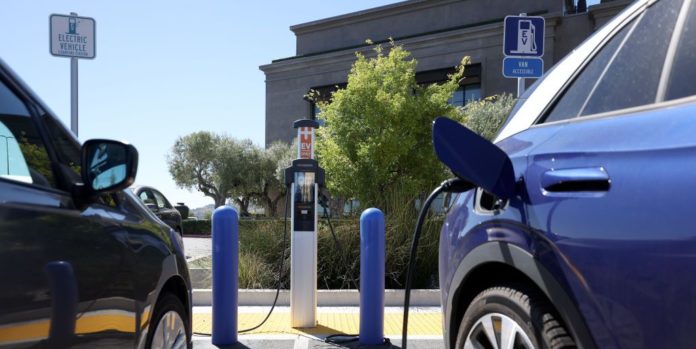- The U.S. government has secured funding to expand the nation’s EV charging network.
- The Biden Administration today announced that $623 million in grants will help build more public chargers in communities and along major corridors.
- The goal is to have at least 500,000 public chargers in the U.S. by 2030.
One of the major sticking points to EV adoption in the U.S. has been the slowly expanding charging infrastructure. However, the federal government plans to improve access with new funding that’s said to help reach the goal of having at least 500,000 public chargers available by 2030. That news comes today as the Biden Administration has announced $623 million in grants to build more chargers in communities and along major corridors.
More EV Chargers Coming
The funding comes from the $2.5 billion Charging and Fueling Infrastructure Discretionary Grant Program, and it’ll be used to fund 47 EV charging and alternative-fueling infrastructure projects in 22 states and Puerto Rico, according to a White House press release. The grants are also said to help build about 7500 EV charging stations. Almost 90 percent of EV charging ports in the U.S. today are public, and they currently number about 140,000, according to the Department of Energy.
Nearly half of the grant money ($311 million) will be invested into EV charging as well as hydrogen-fueling stations in rural and urban communities, with priority going to multi-family housing, schools, parks, and other publicly funded sites. The other $312 million will be used to fill in the gaps along major corridors by providing greater access to EV chargers and alternative-fueling stations. That’s all according to the White House release, which also states that more than 70 percent of the grant money will spent on projects in disadvantaged communities.
The federally funded projects that are specifically planned to increase the number of EV chargers include $10 million for New Jersey to build them around multi-family housing and near public transportation, $15 million for Maryland to build 87 EV charging stations across the state as well as to help support workforce development programs, and $1.4 million to the Chilkoot Indian Association in Alaska to build an EV charging station in a disadvantaged rural community that otherwise lacks access.
Along with $70 million to help Texas create a hydrogen-fueling corridor to Southern California, a combined $30 million will go to parts of California and the state of Washington build more Level 3 fast-chargers and Level 2 chargers. Another $12 million will go to Mesa, Arizona, to build 48 EV chargers that will provide access to a diverse range of electric models.
“This funding will help ensure that EV chargers are accessible, reliable, and convenient for American drivers, while creating jobs in charger manufacturing, installation, and maintenance for American workers,” states U.S. Transportation Secretary Pete Buttigieg in the White House release.
Eric Stafford’s automobile addiction began before he could walk, and it has fueled his passion to write news, reviews, and more for Car and Driver since 2016. His aspiration growing up was to become a millionaire with a Jay Leno–like car collection. Apparently, getting rich is harder than social-media influencers make it seem, so he avoided financial success entirely to become an automotive journalist and drive new cars for a living. After earning a journalism degree at Central Michigan University and working at a daily newspaper, the years of basically burning money on failed project cars and lemon-flavored jalopies finally paid off when Car and Driver hired him. His garage currently includes a 2010 Acura RDX, a manual ’97 Chevy Camaro Z/28, and a ’90 Honda CRX Si.

